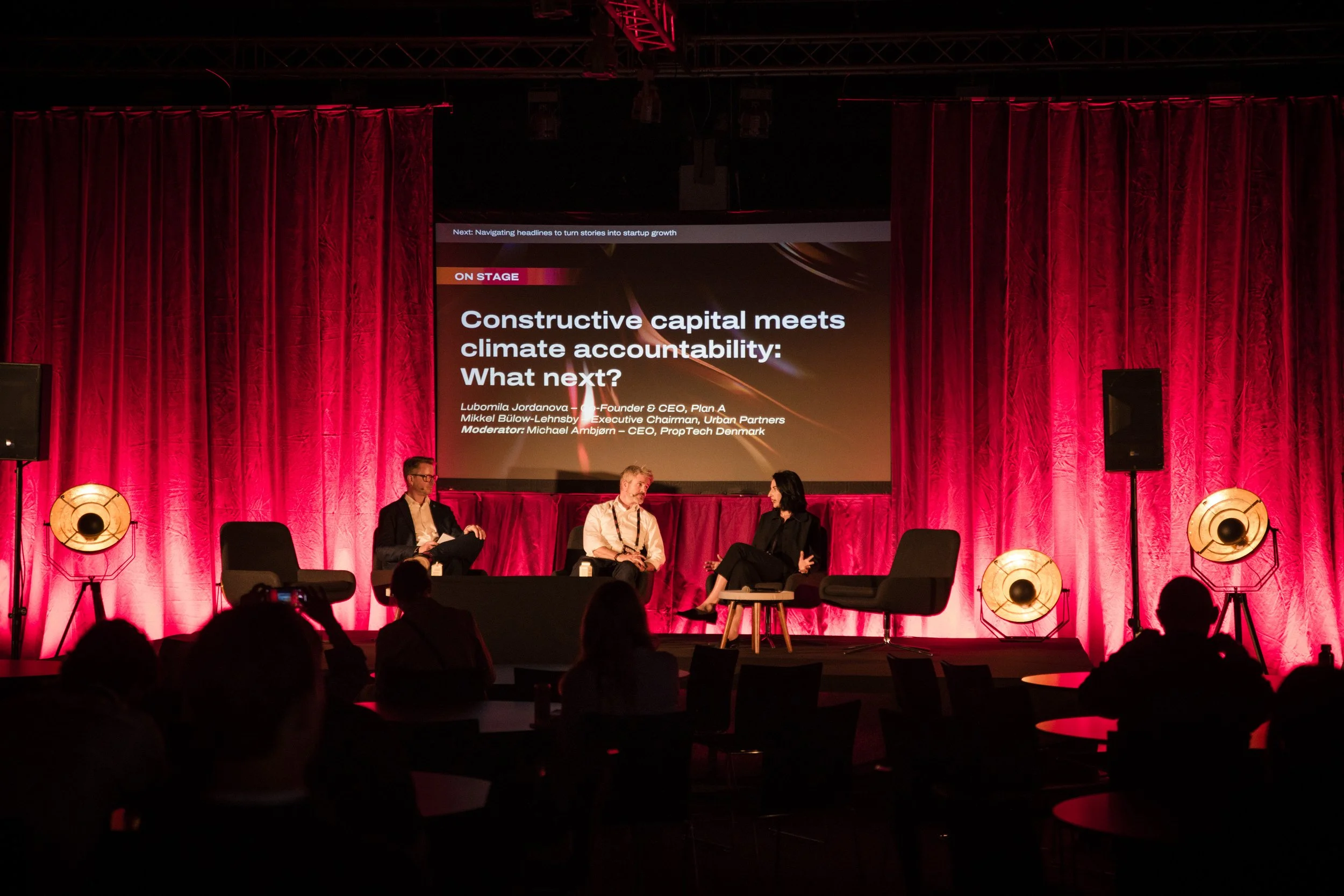Benchmarking for impact: How does the Danish property market stack up?
We are proud to present comundo and Propbinder as partners for PropTech Symposium’25. Advancing a shared vision for a future-proof real estate industry with data-driven insights to future-proof the Danish property market. This aligns with PropTech Denmark’s five key commitments and insights from the Danish PropTech Report 2025.
Comundo’s collaboration with Colliers International offers exclusive insights into the Danish property market through large-scale energy benchmarking: a crucial step in driving decarbonisation and digital maturity across the built environment.
This initiative speaks directly to PropTech Denmark’s five core commitments, especially when it comes to data transparency, sustainability – and industry collaboration. Priorities also outlined in the Danish PropTech Report 2025. It’s exactly this kind of cross-sector effort we need to enable smarter decision-making at scale.
Read on to learn more.
You can’t manage what you don’t measure
As the adage goes, you can’t manage what you don’t measure, and although you might be able to measure your properties’ energy consumption and CO2 emissions, getting an idea of how your properties stack up against others is hard to do – a shame, because energy benchmarking is essential for evaluating building performance and can be extremely useful in identifying energy optimisation or reduction opportunities.
However! This has all changed with the introduction of our new benchmarking feature.
Together with Colliers International, the global investment management company, comundo have benchmarked the Danish property market and collected a wealth of exclusive data on the Danish property market.
This data lets you, for the first time, benchmark your properties against others by building types and construction years. Not only does this give us some fascinating insights into the market overall, but it also gives you a far more granular idea of how well your properties are performing.
The median energy consumption across Danish properties
The median energy consumption varies quite significantly across property types. Warehouses and industrial buildings have quite a low consumption per m2, whereas terraced housing and hotels see the highest consumption.
Energy consumption and construction year
We can see a significant correlation between energy consumption in terraced housing and its construction year.
But not all property types show the same strong correlation.
Even though consumption is falling, the correlation is not quite as clear for all property types.
Regional differences in energy intensity
For apartment buildings, there is roughly a 25% difference between the median energy intensity of the region with the least intensity and the region with the highest intensity. The difference is more than 40% for terraced housing. In both cases, Bornholm is the region with the highest energy intensity.
Regional differences in emission intensity
Interestingly, when looking at the emission intensity, Bornholm has the lowest intensity.
What’s also worth pointing out is that the difference between the highest intensity and lowest intensity is far more significant than the energy intensity, with more than a factor of five in difference.
It’s clear that local emission factors are the deciding factor in the size of emissions from buildings.
Top 15% of properties
Looking at the top 15% of the properties, it is no wonder that warehouses and industrial buildings have a very low energy intensity. Interestingly, the top 15% of offices are below the threshold for an EPC B in Denmark, whereas terraced housing, apartment buildings and hotels are just above that threshold.
Please note that this is an approximate comparison because comundo’s calculation methods are different from the calculation methods used for EPCs.
What did comundo base their research on?
The research is based on energy data from the OIS database, which contains data from around 1.6 million buildings. The building types sampled in this dataset are based on energy data from more than 400,000 buildings for 2023 (the last complete year of data available in the OIS database).
All energy for the buildings has been included, i.e. electricity and heat, regardless of the type of heat. Local emission factors have been utilised to calculate the emission intensities.
What’s next?
Benchmarking like this empowers property owners, investors, and FM leaders to make meaningful changes – grounded in data, not guesswork. And this is just the beginning.
Do you want to dive deeper? Join us at PropTech Symposium’25, where you’ll meet comundo, Propbinder, and a host of other forward-thinking innovators, decision makers and top-executives with the collective ability to shape a smarter, more sustainable future for the industry; and for us all!
Let’s turn insights into action. Together.






















